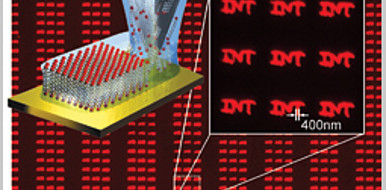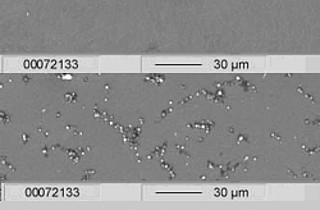New biological ink for dip-pen nanolithography
Phospholipids are biomolecules with self-organization capability under physiological conditions and the formation of a lipid bilayer on a biomembrane. However, the familiar ways of producing phospho-lipid arrays are greatly limited in lateral resolution. A new approach for the first time allows phospholipids to be used as universal ink for DPN on a variety of substrates. Dip-pen nanolithography (DPN) is a method of structuring surfaces. For this purpose, the tip of a scanning force microscope is used as an extremely sharp ink pen to apply molecular inks on a substrate locally. An array of tips also allows this technique to be parallelized massively. Compared to standard lithography, DPN permits the use of various inks, and is characterized by a high throughput and high lateral resolution of less than 20 nm. These characteristics make DPN the preferred method for producing biomolecular arrays. The new ink opens up possibilities not even to be considered with conventional DPN or other structuring techniques. The full potential of DPN is utilized when, in addition, substances soluble in fat are dissolved in phospholipid ink. This technique can be applied in biochemical sensors, screening, drug preparation, membrane technology, and nanofabrication.
Your contact person for this offer

Innovation Manager New Materials, Climate and Environment Karlsruhe Institute of Technology (KIT)
Innovation and Relations Management (IRM) Phone: +49 721 608-26107
Email: jan-niklas.bloetz@kit.edu


